
 |
Burn Anne Digs |
Burn Anne as a source of jasp-agate has been known about for at least 200 years, perhaps even longer, and there is some suggestion that even the Romans knew about it, but this has never been confirmed. This is one of a very few Scottish sites where lapidary stone was dug on a commercial basis, as distinct from being collected. In the late 1990s, and as a result of discussions among interested collectors, approaches were made to the local landowner to allow the use of a mechanical digger (JCB) to search for agate. Excavations were then carried out over a number of years as detailed below. |
| September 1999 |
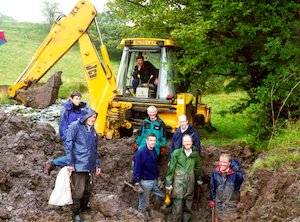 |
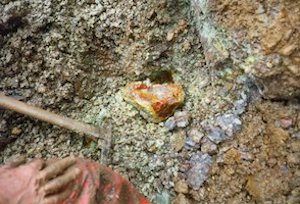 |
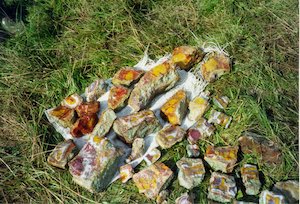 |
| June/July 2000 |
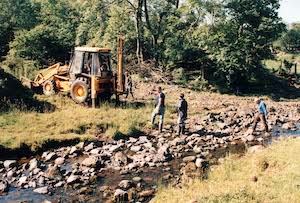 |
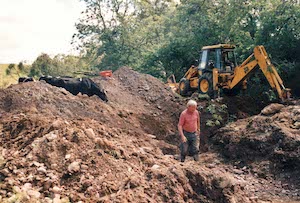 |
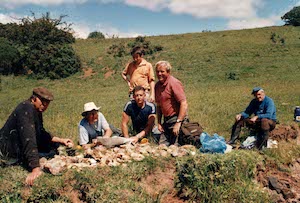 |
| May 2002 |
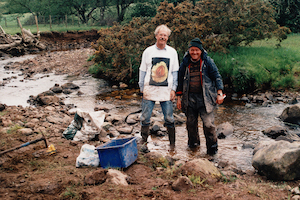 |
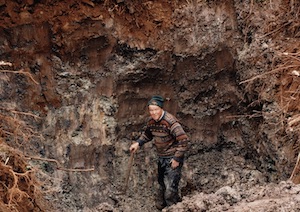 |
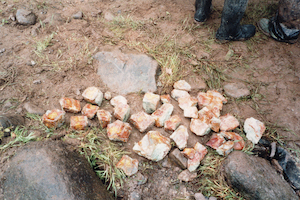 |
| May 2003 |
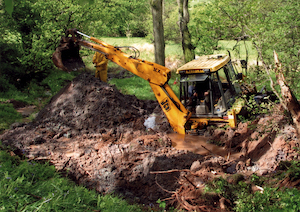 |
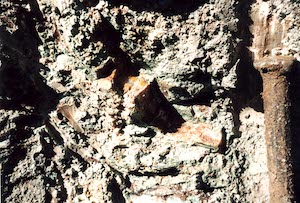 |
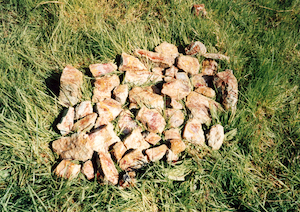 |
| June 2007 |
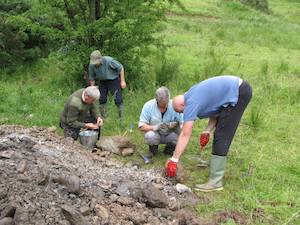 |
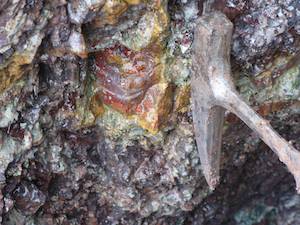 |
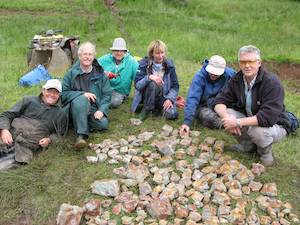 |
September 2013 |
| August 2014 |
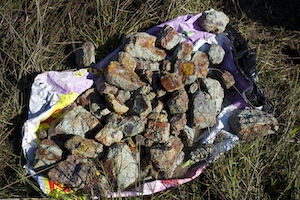 |
| June 2016 |
During the excavations between three and four feet of overburden was removed before access to the lava could be achieved. The digger achieved in a few minutes a task that would have taken days to carry out by hand. After removal of this layer, it was possible to excavate the agate bearing lava. This comprised a friable green decomposed material with a soft and crumbly texture. Another lava type comprising somewhat harder purple-grey material that contained no agates. Excavations occasionally went down as deep as fifteen feet showed that the lava and the agates continued to go down at depth. Excavator buckets filled with lava were extracted and very carefully inspected for agates…...often containing substantial quantities of agates. Often this occurred in the form of isolated “lens shaped” deposits, the best quality agate generally being found towards the edge of these lenses. Other agate was associated with massive Quartz or trended into coarser purple jasper. Once the excavation was complete the resulting pits were refilled, and the topsoil replaced. Within a year of each excavation little trace of the diggings remained with grass and bushes reclaiming the bare ground. These excavations resulted in a lot of high quality large individual pieces of agate with many excellent fortification specimens. It is also clear that there are still very substantial deposits of agate in the ground going down at some depth over a very large area, particularly one pasture where the agate bearing lava continues both down and out over a very broad front. |
| <Burn Anne |